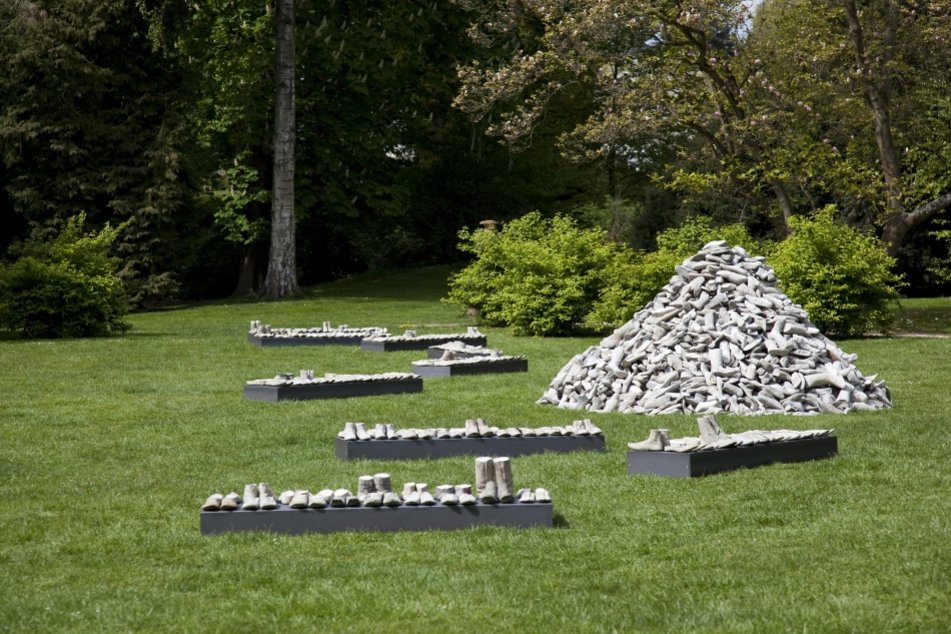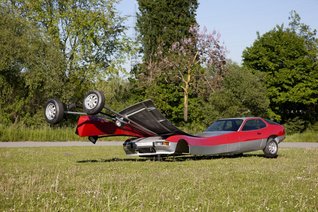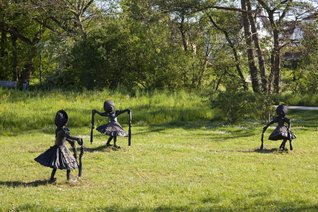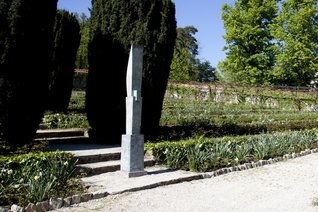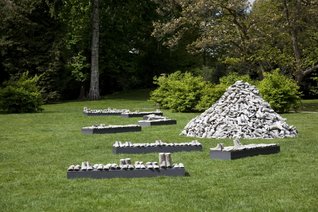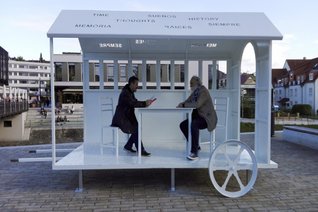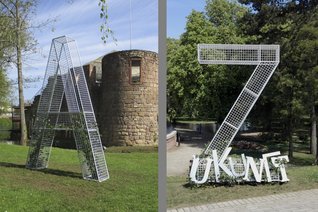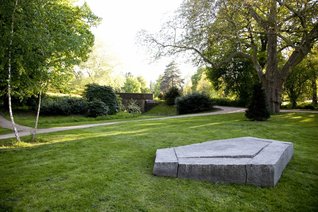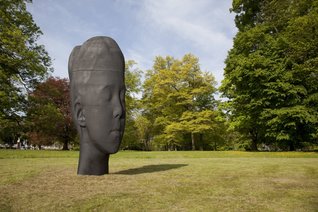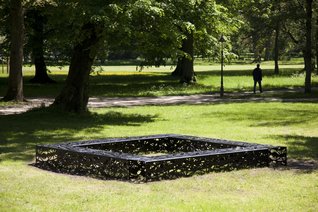Josef Pillhofer
(Austria) * 1921 in Vienna; †2010 in Vienna
Following his international breakthrough in Paris and at the Venice Biennale in the 1950s, Josef Pillhofer came to be considered as one of the most important Austrian sculptors. He studied in Graz, then in Vienna under Fritz Wotruba (see p. 39). Between 1954 and 1971 Pillhofer taught at a number of art institutions, where he promoted non-representational sculpture. Apart from his early figurative compositions, Pillhofer’s own work has been predominently abstract, relying on stone, wood or metal as his working material. The theme of ‘spatial movement’ has shaped his work since the early 1950s. In Bad Homburg, “Blickachsen 11” shows his “Große Raumkonzeption” of 2002. Extending in space from its three base points, which anchor it to the ground, it is distinguished by its mobility and dynamic energy: countless right-angled surfaces have been welded together to form this huge sculpture in corten steel. Its massive weight seems to have been optically broken open by the twisted forms reaching out in different directions. Corten steel is a highly weather-dependent material, which changes in colour and over time takes on a haptically pleasing surface structure.
